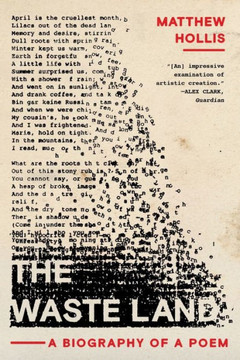
Black Eagle Books
The Waste Land And Other Poems: Celebrating One Hundred Years Of The Waste Land
Product Code:
9781645603429
ISBN13:
9781645603429
Condition:
New
$13.26

The Waste Land And Other Poems: Celebrating One Hundred Years Of The Waste Land
$13.26
Widely regarded as "The Poem of the Century, "The Waste Land is an "infinitely mysterious poem," which, according to John Xiron Cooper, "is a poem we have learned to handle, but not a poem, we have tamed." It is true that publication of the poem marked a watershed moment in the history of British poetry. Soon after its appearance, first in the inaugural volume of The Criterion (October 1922), a quarterly British literary magazine, founded and edited by Eliot himself, in London, and next in the American publication The Dial in New York (November 1922), the poem came to be regarded as one of the seminal works of modernist poetry, and Eliot as a very important literary figure of the time. Eliot earned the Dial Award of $2,000. It is important to note that The Waste Land has no definite structure. It is a poem that does not have a plot. Nor does it have a beginning nor an end. The poetic fragments mirror the fragmentation of life in the cities of Europe, devastated by World War I. It can be termed as "a heap of broken images," a poem, as asserted by Harold Munro, "a potpourri of descriptions and episodes." Since the poem is based on Tiresias's visions which come to him in spurts, The Waste Land seems to be fragmented or disjointed. The reader is expected to string all these fragments together to derive meaning. The Waste Land is also a multi-voiced poem, it has a multitude of voices, voices spoken in Greek, Latin, Sanskrit, German, and Italian. It is also richly allusive and polyvocal. It alludes to several texts such as Ovid's Metamorphoses, Dante's Divine Comedy, Baudelaire's Les Fleurs du mal, Shakespeare, Buddhism, Hindu Upanishad and others. The mind-boggling allusiveness and profundity of the text just went over the heads of his readers, who were initially baffled by a string of quotations and reference to a variety of sources in multiple languages like Greek, Latin, French, German, Italian and Sanskrit. They could hardly grasp Eliot's 'aesthetics' of fragmentation and juxtaposition, which can be taken as an inextricable part of the poem's symbolic significance. The Waste Land is basically a peopled landscape; many characters, several of whom are women, roam around freely in the wasteland. It is interesting to note that "all the women are one woman, and the two sexes meet in Tiresias." All these women have their own individual story to narrate, their own voice for people to listen to. Such women like Marie, a niece and confidante of Empress Elisabeth of Austria, Belladonna, the Lady of the Rocks, Lil, the mother-of-five whose unhappy marriage is discussed by her friend in a London pub, the fortune-teller Madame Sosostris, the typist girl, who is "bored and tired," the nymphs, who happened to be the friends of the loitering heirs of city directors vary from each other in terms of their age, class, educational level or socio-economic status. The Waste Land is fragmented into five sections: 'The Burial of the Dead, ' 'A Game of Chess', 'The Fire Sermon, ' 'Death by Water' and 'What the Thunder Said.'
| Author: T. S. Eliot |
| Publisher: Black Eagle Books |
| Publication Date: Dec 27, 2022 |
| Number of Pages: 82 pages |
| Language: English |
| Binding: Paperback |
| ISBN-10: 1645603423 |
| ISBN-13: 9781645603429 |





